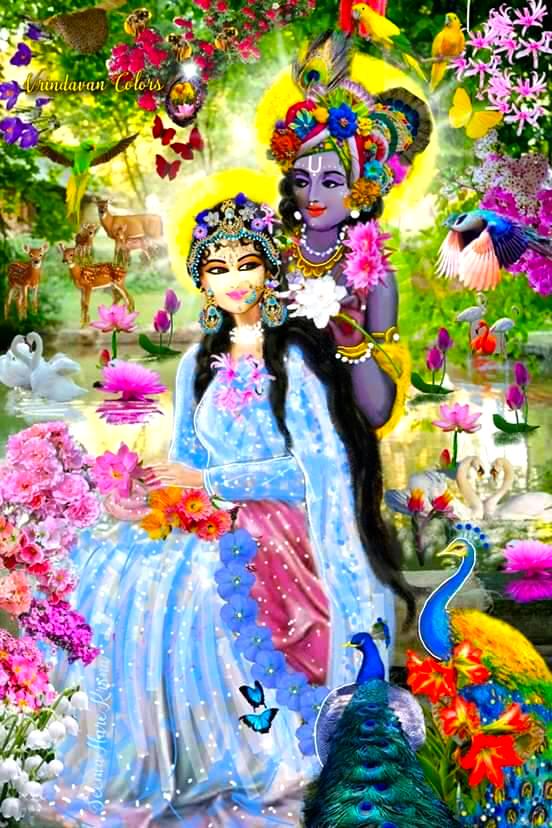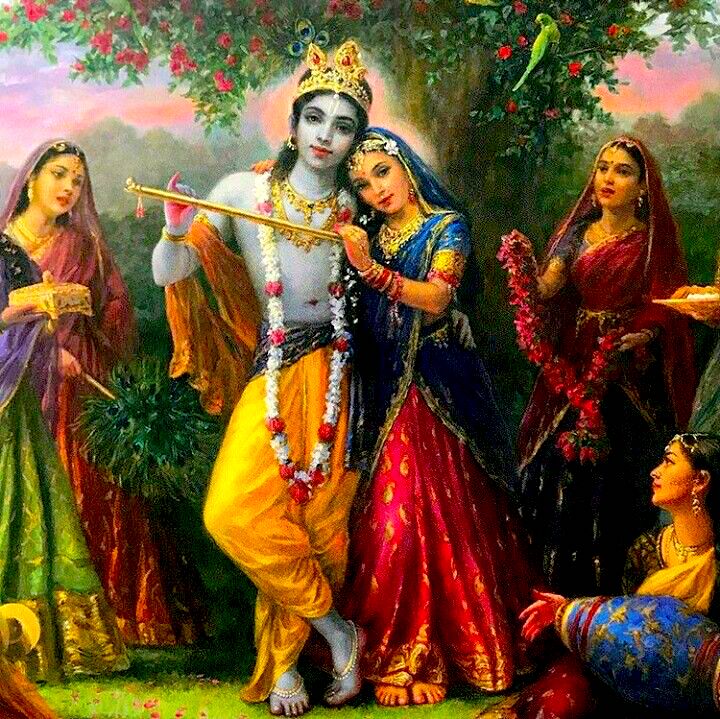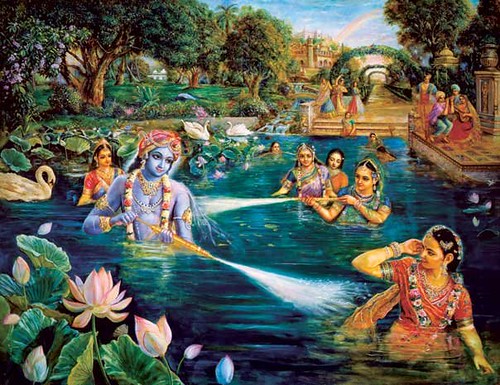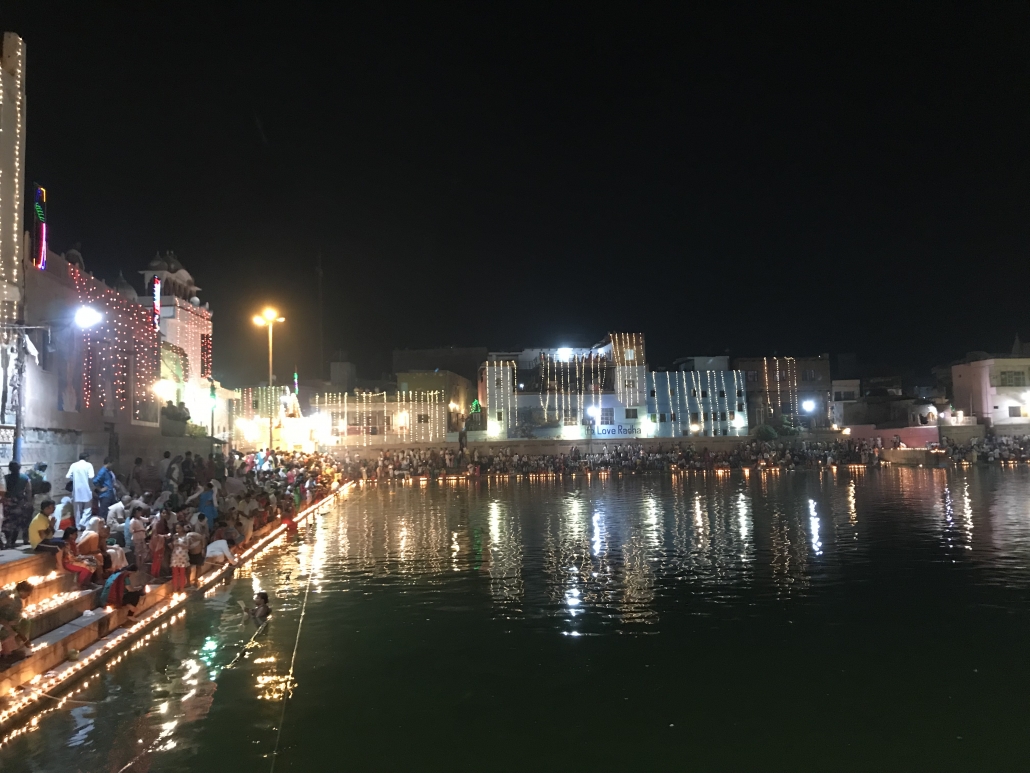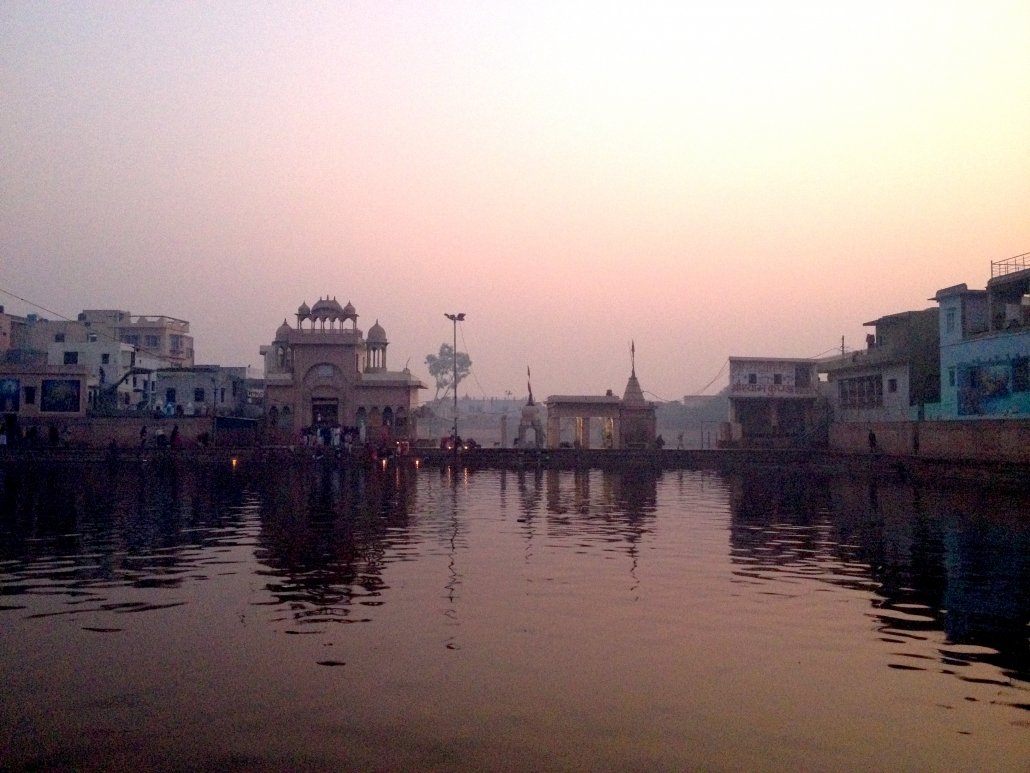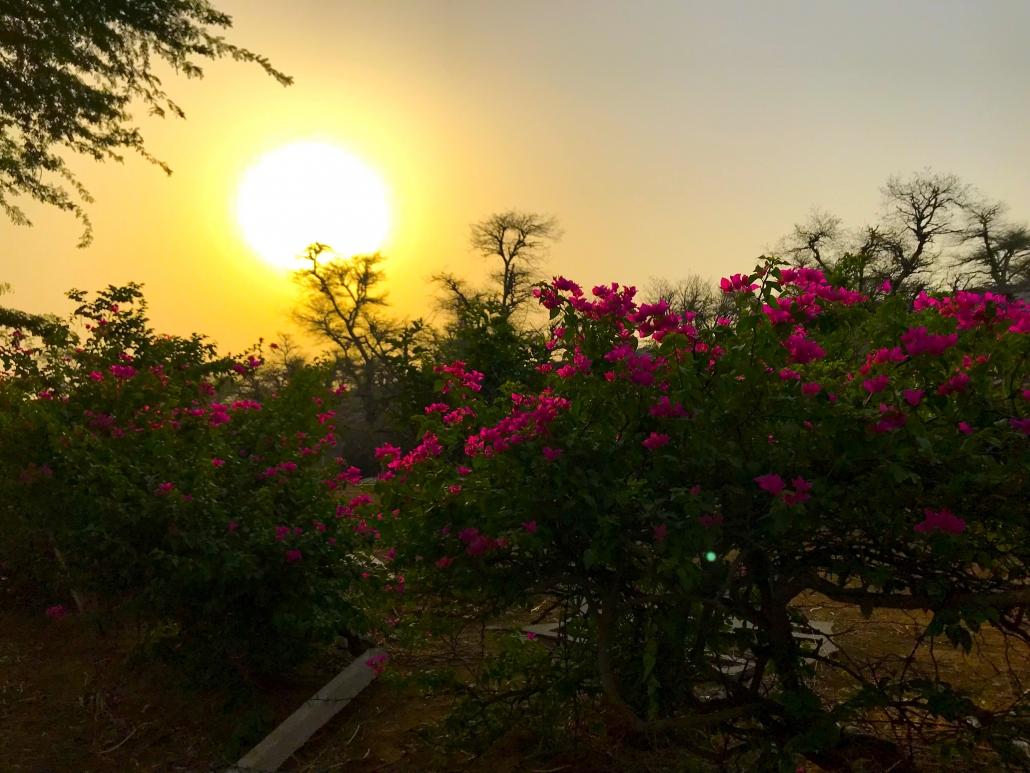Mahanidhi Swami
What is the difference between an uttama bhagavata an uttama adhikari devotee? There is widespread confusion concerning the true meaning of these terms. And as a result, new candidates or even the initiated often argue over whether or not their diksha Guru is an uttama bhagavata, an uttama adhikari, a madhyama adhikari etc.
Knowing the truth concerning this topic is essential and crucial, especially for someone looking for a Guru. The confusion arises from shastras’ use of the same terms to describe two different truths. The three words uttama, madhyama and kanishtha can refer either to the level of one’s eligibility for bhakti bhajana, or the level or percentage of a devotee’s vision, perception, and direct experience of Bhagavan Sri Krishna.
In other words, one (described in Bhakti Rasamrita Sindhu) is a measurement of a devotee’s faith in and knowledge of Sri Krishna. And the other one (described in Srimad Bhagavatam) is a measurement of one’s vision, perception and experience of Bhagavan and the degree of a devotee’s love and attachment to Bhagavan Sri Krishna.
Sri Rupa Gosvami describes the three levels of adhikara or fitness for bhakti sadhana as kanishta adhikari, madhyama adhikari and uttama adhikara. Thus, personal adhikara for bhakti is based on one’s faith in and knowledge of Bhagavan Sri Krishna. On the other hand, the Srimad Bhagavatam describes three levels of spiritual advancement among devotees as kanishtha (prakrta bhakta), madhyama bhakta, and uttama bhagavata according to the degree of their vision of Bhagavan Sri Krishna.
THREE LEVELS OF ADHIKARA FOR BHAKTI
In Bhakti Rasamrita Sindhu (1.2.16-19), Sri Rupa Gosvami describe as follows:
1) UTTAMA ADHIKARI: “Is one who is expert in bhakti shastras, logic and reason, and has firm, mature and unbreakable faith in Bhagavan Sri Krishna.”
śāstre yuktau ca nipuṇaḥ, sarvathā dṛḍha niścayaḥ
prauḍha śraddho ‘dhikārī yaḥ, sa bhaktāv uttamo mataḥ 17
2) MADHYAMA ADHIKARI: “Is one who has full faith in shastras and Bhagavan Sri Krishna but lacks expertise in transcendental wisdom.”
yaḥ śāstrāhi ṣvani puṇaḥ śraddhāvan sa tu madhyamaḥ 18
Sri Jiva Goswamipada tika: Lacking expertise in shastras means that one has a general knowledge of shastras, and firm faith which will not break even if one cannot defeat opposing arguments.
Srila Visvanatha Cakravarti tika:
The word sraddhavan in text 17 means that the madhyama adhikari has firm faith in shastras and the words of his/her Guru.
3) Kanishtha Adhikari: “Is the lowest level of devotee who has very little knowledge of shastras, weak, tender faith which can easily be broken by contrary beliefs or opposing arguments.
yo bhavet komala śraddhaḥ sa kaniṣṭho nigadyate 19
Why devotees have different adhikara or fitness for bhakti is nicely explained by Sri Mukunda das Goswami (shishya of Sri Krishna Dasa Kaviraja): “The division of three types of eligibility or adhikara arise out of one’s spiritual status attained by the grace of Bhagavan Sri Krishna Himself and the saints with whom one has associated in the past.”
THREE LEVELS OF ADVANCED DEVOTEES
The Srimad Bhagavatam describes the three levels of devotees as beginner, intermediate and topmost according to the degree of their vision of Bhagavan Sri Krishna.
1) UTTAMA BHAGAVATA: “The most advanced Krishna bhakta who sees his most worshipable Bhagavan Sri Krishna within everything and sees everything in Bhagavan.”
sarva-bhūteṣu yaḥ paśyed bhagavad-bhāvam ātmanaḥ
bhūtāni bhagavaty ātmany eṣa bhāgavatottamaḥ
Srimad Bhagavatam 11.2.45
Srila Visvanatha Cakravarti tika: When Hiraṇyakaśipu asked, “Where is your Ishvara?” Prahlāda said, “He is everywhere. One can see Bhagavan Sri Krishna even in a pillar.” Similarly, one should see all living beings in Bhagavan Sri Krishna (ātmani), just as Yaśodā saw all beings in the belly of Krishna.
There is another meaning. One should see all beings as having Krishna prema, and being absorbed in Krishna who appears in their minds. This shown by the prema of the Vraja-gopis and Dvaraka mahishis.
vana-latās tarava ātmani viṣṇuṁ, vyañjayantya iva puṣpa-phalāḍhyāḥ
praṇata-bhāra-viṭapā madhu-dhārāḥ, prema-hṛṣṭa-tanavo vavṛṣuḥ sma
The trees and creepers in the forest respond by becoming so luxuriant with fruits and flowers that they seem to be manifesting Lord Viṣṇu within their hearts. As their branches bend low with the weight, the filaments on their trunks and vines stand erect out of the ecstasy of love of God, and both the trees and the creepers pour down a rain of sweet sap. Srimad Bhagavatam 10.35.9
nadyas tadā tad upadhārya mukunda-gītam’ āvarta-lakṣita-manobhava-bhagna-vegāḥ
āliṅgana-sthagitam ūrmi-bhujair murārer, gṛhṇanti pāda-yugalaṁ kamalopahārāḥ
‘When the rivers hear the flute-song of Krishna, their minds begin to desire him, and with the arms of their waves they embrace Murāri’s lotus feet and, present offerings of lotus flowers.’ Srimad Bhagavatam 10.21.15
na calasi na vadasy udāra-buddhe, kṣiti-dhara cintayase mahāntam artham
api bata vasudeva-nandanāṅghriṁ, vayam iva kāmayase stanair vidhartum
O magnanimous mountain, you neither move nor speak. You must be pondering some matter of great importance. Or do you, like us, desire to hold on your breasts the feet of Vasudeva’s darling son? Srimad Bhagavatam 10.90.22
One should contemplate the mood of Bhagavan Sri Krishna within oneself as being present in all living entities. One should see in this way implies that one must GAIN QUALIFICATION FOR SEEING, RATHER THAN being able to see like this at all times. Great devotees like Nārada, Vyāsa and Śukadeva do not see Bhagavan Sri Krishna everywhere at all times, and this increases their desire for Krishna.
When this longing to see Bhagavan Sri Krishna increases further, then the devotees see the whole world as Bhagavan Sri Krishna as in the logic that a lusty man sees desirable women everywhere. In this verse, the verb paśyed (see) means actually “to know”. Thus the best devotee is he who knows Bhagavan Sri Krishna is in everything and everything is in Bhagavan Sri Krishna simply by scriptural knowledge.
Further on in this chapter, the Srimad Bhagavatam (11.2.55) describes the topmost type of bhagavata bhakta i.e. the maha bhagavata!
visṛjati hṛdayaṁ na yasya sākṣād, dharir avaśābhihito ‘py aghaugha-nāśaḥ
praṇaya-rasanayā dhṛtāṅghri-padmaḥ, sa bhavati bhāgavata-pradhāna uktaḥ
** MAHABHAGAVATA: “Is the best of devotees because Bhagavan Śrī Hari, who destroys heaps of sins for His devotees, never leaves his heart even if he accidentally calls Hari, because he has permanently bound Sri Hari’s lotus feet within his heart with the ropes of intimate love (praṇaya rasanaya).”
Srila Visvanatha Cakravarti tika: There is no problem even with heaps of sins because Bhagavan can easily destroy a multitude of sins simply by being called. Then what to speak of chanting Bhagavan nama with a continuous taste of rasa?
This verse answers the question ‘Why doesn’t Bhagavan leave the temple of their hearts?’ Bhagavan can’t leave because the devotee ties his heart to the lotus feet of Bhagavan with the ropes of affection. Just as Yaśodā’s prema bound Krishna to the mortar, the devotee binds Bhagavan with the chains of prema!
2) MADHYAMA BHAKTA: “The intermediate or second-class devotee offers his love to Bhagavan Sri Krishna, befriends Krishna bhaktas, shows mercy to the innocent ignorant, and avoids the envious.”
īsvare tad-adhīneṣu bāliśeṣu dviṣatsu ca,
prema-maitrī-kṛpopekṣā yaḥ karoti sa madhyamaḥ
Srimad Bhagavatam 11.2.46
Srila Visvanatha Cakravarti tika:
The madhyama devotee shows prema for his worshipable Bhagavan Sri Krishna. This actually means he has attachment for Bhagavan rather than prema. He befriends bhaktas dependent on Sri Krishna, and shows mercy to those ignorant of bhakti. Since even Bharata, Vyāsa and Śukadeva did not show mercy to all persons they saw, it should be explained that this mercy to the ignorant arises by itself.
This is understood from the example of the mountain SB 10.20.36: During the monsoon season, mountains sometimes release their storage of water and sometimes do not, just as realized devotees sometimes give the nectar of divine wisdom and sometimes do not.
Madhyama bhaktas avoid haters of Bhagavan because they know their mercy will be useless with them. It is proper to stay away from inimical ones understanding they are foolish while simultaneously reflecting upon one’s own good fortune. The madhyama devotee does not have the qualification to see Bhagavan in all beings. But when he attains that quality he then becomes an uttama devotee. Even among uttama devotees like Nārada one will see these four qualities of prema, friendship, mercy and indifference.
3) PRAKRTA BHAKTA: “The neophyte, beginner bhakta (kanishtha) who faithfully worships Krishna’s murti, does not behave properly with others. He is a materialistic, unrefined devotee occupying the lowest position.”
arcāyām eva haraye pūjāṁ yaḥ śraddhayehate,
na tad-bhakteṣu cānyeṣu sa bhaktaḥ prākṛtaḥ smṛtaḥ
Srimad Bhagavatam 11.2.47
CONCLUSION: Hopefully, everyone now understands these terms and can thus judge devotees accordingly. Since it “takes one to know one” it is impossible for a Guru seeker to tell whether a proposed Guru is a bhava-bhakta or premi bhakta, uttama bhakta, or a maha bhagavata. Such extremely advanced and liberated devotees are very, very rare.
So what to do, and how to select your eternal friend and wise guide to love divine, Sri Guru? One seeking a diksha Guru should select an uttama adhikari bhakta i.e. one whose deep knowledge of bhakti shastras can destroy your doubts; and whose ‘rock solid’ faith in shastras and Bhagavan Sri Krishna inspires and deepens your own faith in Sri Krishna and the path of Krishna bhakti sadhana.
By surrendering to and accepting diksha from such a Guru, one will attain genuine bhakti, and joyfully progress on the path of bhakti to the perfection of Sri Sri Radha-Govinda’s prema seva in the groves of Vrindavana!
Sri Guru tattva ki jai! Jaya Jaya Sri Radhe!

